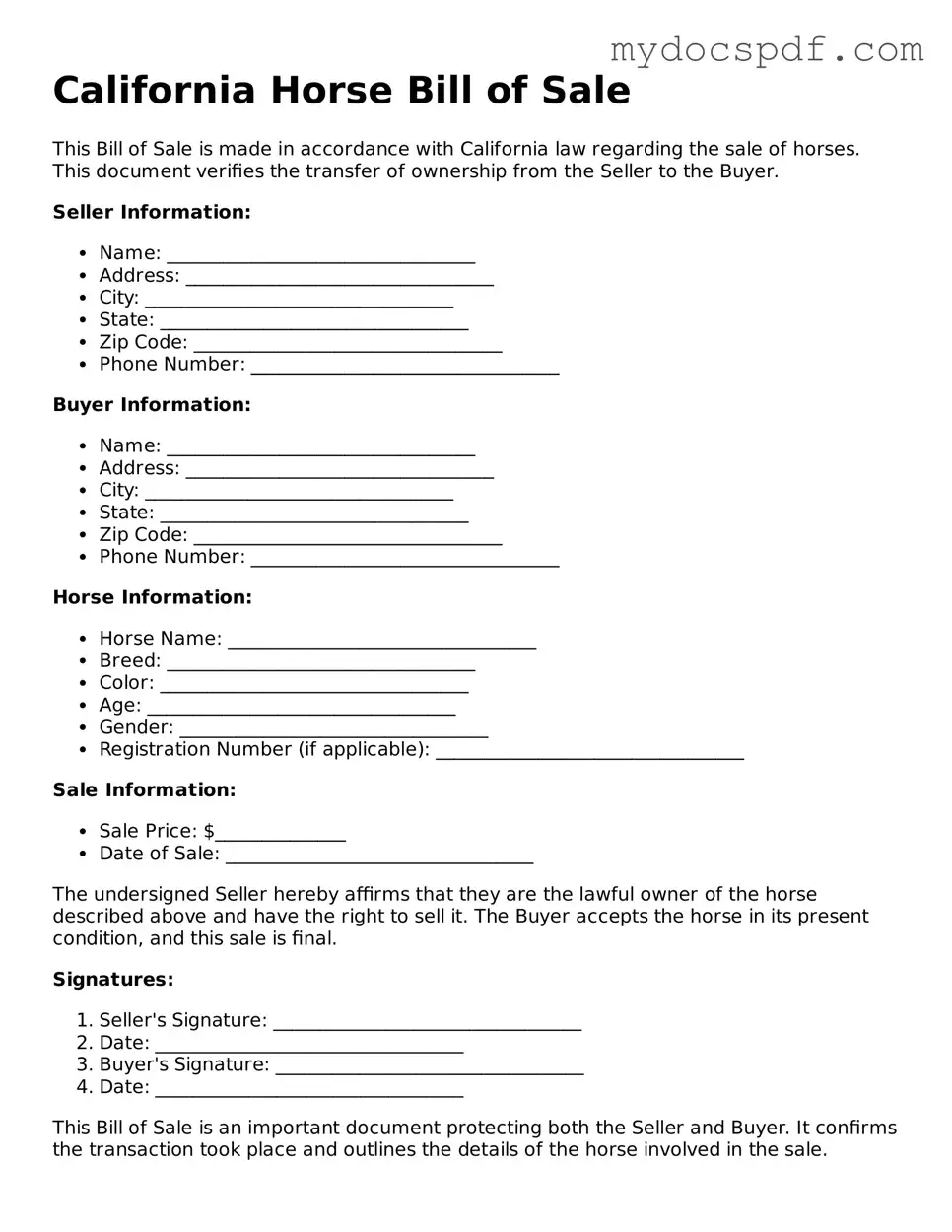The California Horse Bill of Sale form serves as a crucial document for anyone involved in the buying or selling of horses within the state. This form not only provides a legal record of the transaction but also outlines important details that protect both the buyer and the seller. Key elements include the identification of the horse, which typically covers aspects like breed, age, color, and registration numbers. Additionally, the form captures the sale price, payment terms, and any warranties or representations made by the seller regarding the horse's health and soundness. By detailing these aspects, the form helps to clarify the responsibilities and rights of both parties, reducing the potential for disputes. Furthermore, it often includes sections for signatures, ensuring that both the buyer and seller acknowledge the terms of the sale. Understanding the nuances of this form is essential for anyone looking to engage in a horse transaction in California, as it ensures compliance with state regulations and fosters transparency in the sale process.
